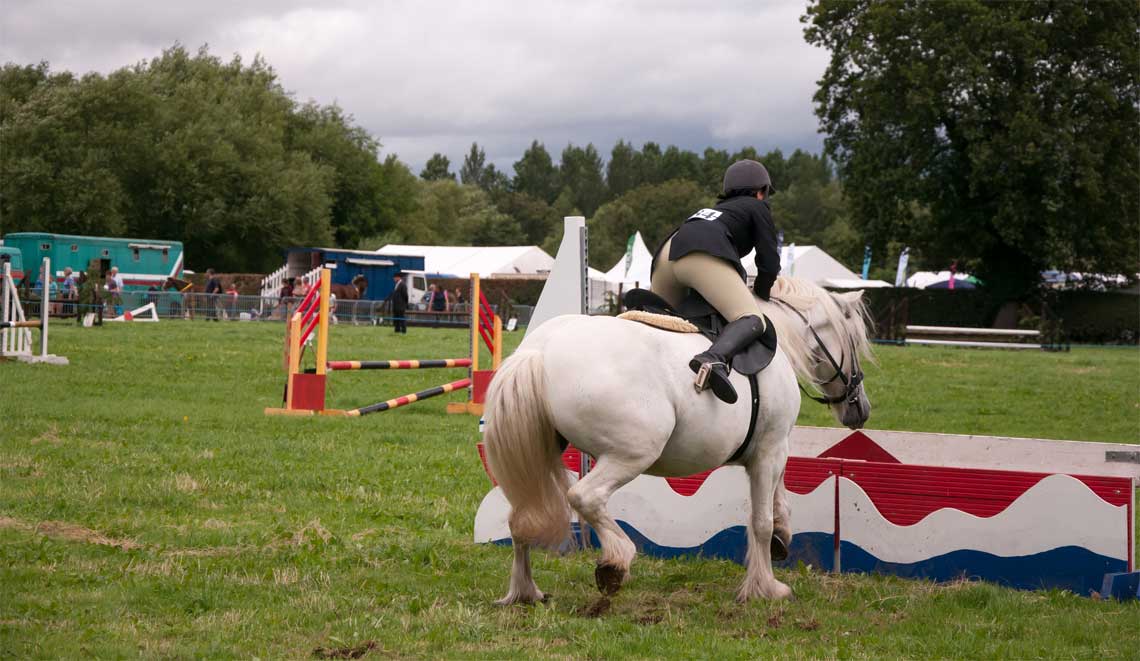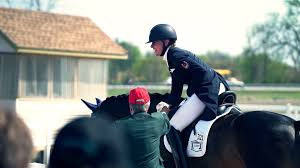
It can feel like a lot to take on, getting onto a horse and riding for the first time. After all, we’re talking about a 1,000+ pound animal that is capable of great speed and power. Most people, when they start out as horseback riders, do so with the best of intentions. They want to be informed newcomers to the scene, as to avoid embarrassing mistakes or potentially even hurting themselves or their equine companion. But every beginner will make mistakes; it’s just something that happens.
In this article we’ll detail 6 common mistakes made by new horseback riders. With this information in mind, we hope to help you have a more easy-going and successful first time on the back of a horse.
6 Things You Shouldn’t Do When Riding a Horse
 Your instructor will give you some solid pointers that you should definitely follow as you embark on the riding trail. But before you even sign up for horseback riding sessions, here are 6 “don’ts” that you should keep in mind as you move forward.
Your instructor will give you some solid pointers that you should definitely follow as you embark on the riding trail. But before you even sign up for horseback riding sessions, here are 6 “don’ts” that you should keep in mind as you move forward.
Holding the Reigns too High
It is instinctive for most people to hold their hands up high in the air to rebalance themselves when they feel insecure. When you’re holding the reigns of a horse, however, this can compromise your stability instead of helping it. The reigns are made much too long to have adequate control of the horse when they are held at chest height or higher.
To fix this issue, hold the reigns at hip level and be conscious of your body’s position in relation to the horse. This gives the rider much better control and helps to keep them from sliding on the saddle.
Keeping Your Legs Too Tight
 Your legs should be placed firmly on either side of the horse, but they shouldn’t be applying a vice-like grip on the horse’s sides. Squeezing too tightly can make the horse think that they should move forward or move faster than you’ve intended, and you don’t want unpredictability being a marker of your first horseback riding excursion. Additionally, this makes the body tense. And a tense rider can affect the horse’s mood and behavior.
Your legs should be placed firmly on either side of the horse, but they shouldn’t be applying a vice-like grip on the horse’s sides. Squeezing too tightly can make the horse think that they should move forward or move faster than you’ve intended, and you don’t want unpredictability being a marker of your first horseback riding excursion. Additionally, this makes the body tense. And a tense rider can affect the horse’s mood and behavior.
Instead of clenching down on the horse, let your legs hang downward from the hips without swinging to and fro. Think of your body’s proper alignment on a horse as a straight line, from the top of your head to the tips of your toes.
Cramming Feet into the Stirrups
The stirrups used in riding are an essential safety feature, but it can actually become dangerous if you jam your feet too far into them. This is especially true if you’re not wearing proper riding boots or riding with safety stirrups. Instead of forcing your foot as far into the stirrup as you possibly can, simply place your foot in the stirrup up to the ball of your foot. The ball is the thickest part of the foot.
Slouching in the Saddle
It may be your natural posture to slouch. Perhaps you want to emulate the cowboys of old Western films. But you should know that slouching is one mistake that you shouldn’t make when on the back of a horse. It is hard to control a horse when the rider is hunched over. Also, the rider may experience problems with maintaining their balance with this posture.
Instead, you should ride your horse with a straight back – but not a rigid or tense one. Sit as straight as you can while still being comfortable on the horse.
Letting the Horse Slide the Reins
A horse is naturally going to move their head as they move along. As a rider, it is your job to accommodate this natural movement. When the reins are allowed to slide through the rider’s hands, this minimizes the control that the rider has over the actions of the horse. The rider may also try to make up for the sudden slack by elevating their hands, which can affect balance negatively.
To fix this problem, allow your hands and arms to give the horse more rein. Don’t let the reins slip through your hands. You might have a hard time of this at first, as figuring this out requires a bit of finesse that can only be achieved through practice.
Holding the Reins too Tightly
Just as you shouldn’t be too lax on the reins, you shouldn’t have a death grip on them, either. If your legs are telling the horse to go, but your hold on the reins is telling them to stay put, you’re going to send the horse some mixed signals. They may even feel pain and pressure that is uncomfortable and will make them not want to work with you. The horse may even rear up on you, which can be dangerous.
Hold the reigns firmly but gently, like you would if you were holding a baby. You don’t want to let the reins slip through your hands, but you don’t want to cause your horse discomfort. You can adjust the rein length as the horse moves, if necessary.
